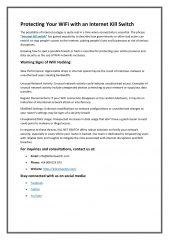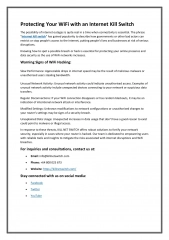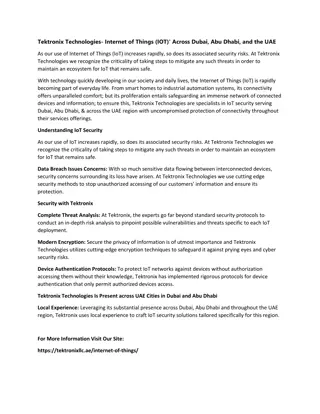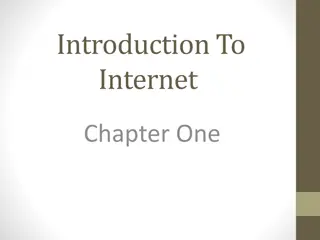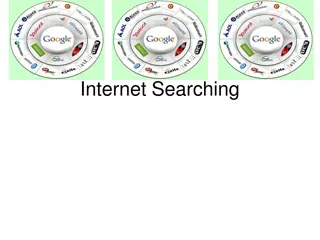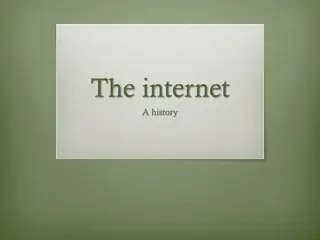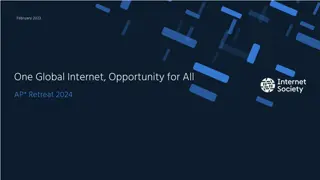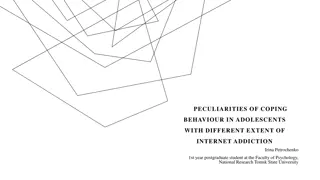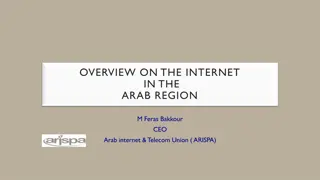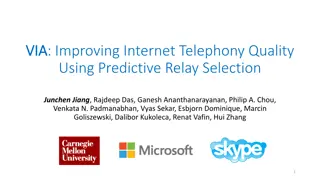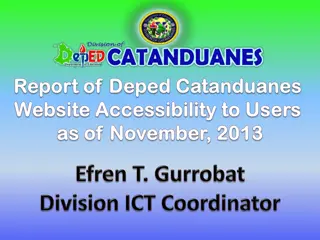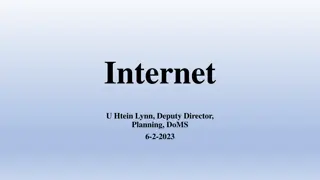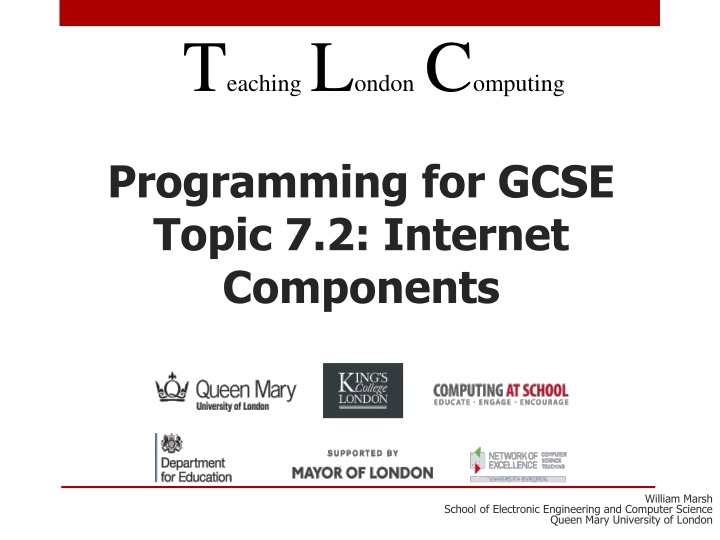
Exploring Internet Components and Architecture in GCSE Computing
Understand the main concepts of the Internet, its components, and how it functions. Topics include routers, packet switching, multiplexing, and network architecture. Dive into the inner workings of the Internet for a comprehensive overview.
Uploaded on | 0 Views
Download Presentation

Please find below an Image/Link to download the presentation.
The content on the website is provided AS IS for your information and personal use only. It may not be sold, licensed, or shared on other websites without obtaining consent from the author. If you encounter any issues during the download, it is possible that the publisher has removed the file from their server.
You are allowed to download the files provided on this website for personal or commercial use, subject to the condition that they are used lawfully. All files are the property of their respective owners.
The content on the website is provided AS IS for your information and personal use only. It may not be sold, licensed, or shared on other websites without obtaining consent from the author.
E N D
Presentation Transcript
TeachingLondon Computing Programming for GCSE Topic 7.2: Internet Components William Marsh School of Electronic Engineering and Computer Science Queen Mary University of London
Aims Explain the main ideas of the Internet Why is it call the Internet? How is it run? Is anyone in control? What's the Internet architecture? What's a router?
Teaching Issue As with other network topics Principles not just description not overwhelming complexity
Hardware of the Internet get a.mp3
Three Main Components Hosts: computers running programs Client: makes requests to Server: provides a service; waits for requests Email, Web, iTunes Transmission lines Copper wire, optical fibre, or radio Routers: specialized computers that connect multiple transmission lines
Packet Switching Split a message into chunks Add a header to each chunk Send packets independently Combine received packets get a.mp3 get a.mp3 h1 get h1 get h2 a.mp3 h2 a.mp3 Address of Dest., Packet Id, etc
Routers in Packet Switched Network Each router is a specialized computer that receives, stores and forwards packets.
Multiplexing Link can be shared between different data streams Division in time as needed, not fixed
Remarkable! Internet could have traffic jams Shared communication lines No central co-ordination Polite behaviour (particular in TCP) prevents traffic jams (network congestion) but no delivery guarantees
NETWORKS ARCHITECTURE Lots of protocols
Protocol Agreement on how to communicate Defines: format of a message actions when data sent & received, E.g. TCP, IP, UDP, HTTP, SMTP, Ethernet,
One Protocol for the Internet? Too many machines in the Internet Too many problems to solve/implement. How to request/receive web pages? How to split and combine packets? How to find a route to the destination? How to send data over physical cables? Hard to introduce new applications
Layered Architecture Build a stack of layered protocols, each: solves only a few (not all) problems defines abstraction of the Internet Transport Transport Network Network Data Link Data Link
Layered Architecture Build a stack of layered protocols, each: solves only a few (not all) problems defines abstraction of the Internet Request web page Split into packets Transport Transport Network Network Find a route Data Link Data Link Send data over cable
End Hosts vs. Routers host host HTTP message HTTP HTTP TCP segment TCP TCP router router IP packet IP packet IP packet IP IP IP IP Ethernet interface Ethernet interface SONET interface Ethernet interface Ethernet interface SONET interface
Remarkable! No one knows how many Internet computers Decentralised organisation Many link standards Ethernet Wifi fibre optic Internet evolves: new applications
Internet Analogy: Post Address: town + house IP address Network + host Mail sorting router Letters find their way: you do not know where the sorting offices are Various data links Post by train, van, bike Shared infrastructure You post a letter when you want capacity?
Internetworking Internetwork Interconnected networks network address Host-host to packet delivery host address
IP Address For computers (hosts) on the Internet Globally unique Consists of 4 bytes. Written as aa.bb.cc.dd Hierarchical: network + host Router: multiple addresses E.g. (Real) www.amazon.co.uk : 87.238.85.129 www.facebook.com : 204.15.20.80 www.eecs.qmul.ac.uk : 138.37.95.150 frank.eecs.qmul.ac.uk : 138.37.88.242
How Are Addresses Allocated? IANA The Internet Assigned Numbers Authority ICANN Internet Corporation for Assigned Names and Numbers IANA manages the IP address space allocations globally delegates five regional Internet registries (RIRs) IANA is managed by ICANN under contract to the US Department of Commerce Regional Internet Registries allocate IP address blocks to local ISPs
Regional Internet Registries R seaux IP Europ ens Network Coordination Centre (RIPE) for Europe, the Middle East, and Central Asia
Who Got the Addresses? Class A (16 million hosts) see: http://en.wikipedia.org/wiki/List_of_assigned _/8_IPv4_address_blocks 25.0.0.0/8 UK Ministry of Defence (RSRE) 51.0.0.0/8 UK Government Department for Work and Pensions AS3161 Queen Mary and Westfield College (SuperJANET SMDS) 161.23.0.0/16 Queen Mary and Westfield College 138.37.0.0/16 Queen Mary and Westfield College 192.135.234.0/24 Queen Mary and Westfield College 192.135.231.0/24 Queen Mary and Westfield College
CONFIGURATION DNS an example
Remarkable! No centralised configuration Automatic configuration Granny takes laptop to coffee shop IP address allocated connected to Internet can send mail
Domain Name System (DNS) Translate URL IP Yellow pages of the Internet Decentralized management Hierarchy of DNS servers Root servers Top-level domain (TLD) servers Authoritative DNS servers
DNS Root Servers 13+ root servers (see http://www.root-servers.org/) Labeled A through M A Verisign, Dulles, VA C Cogent, Herndon, VA (also Los Angeles) D U Maryland College Park, MD G US DoD Vienna, VA H ARL Aberdeen, MD J Verisign, ( 11 locations) K RIPE London (also Amsterdam, Frankfurt) I Autonomica, Stockholm (plus 3 other locations) E NASA Mt View, CA F Internet Software C. Palo Alto, CA (and 17 other locations) m WIDE Tokyo B USC-ISI Marina del Rey, CA L ICANN Los Angeles, CA
Top Level Domain (TLD) Servers Top-level domain (TLD) servers Generic domains (e.g., com, org, edu) Country domains (e.g., uk, fr, ca, jp) Typically managed professionally Nominet www.nic.uk the Internet registry for .uk domain names
Authoritative DNS Servers Authoritative DNS servers Provide public records for hosts at an organization For the organization s servers (e.g., Web and mail) Can be maintained locally or by a service provider START-UP register a new .com? Add to the .com TLD Add a new domain to myco.com Add to the myco authoritative sever
Summary Internet connected networks Independently run Agreed protocols 'IP' for an Internet address Decentralised control

